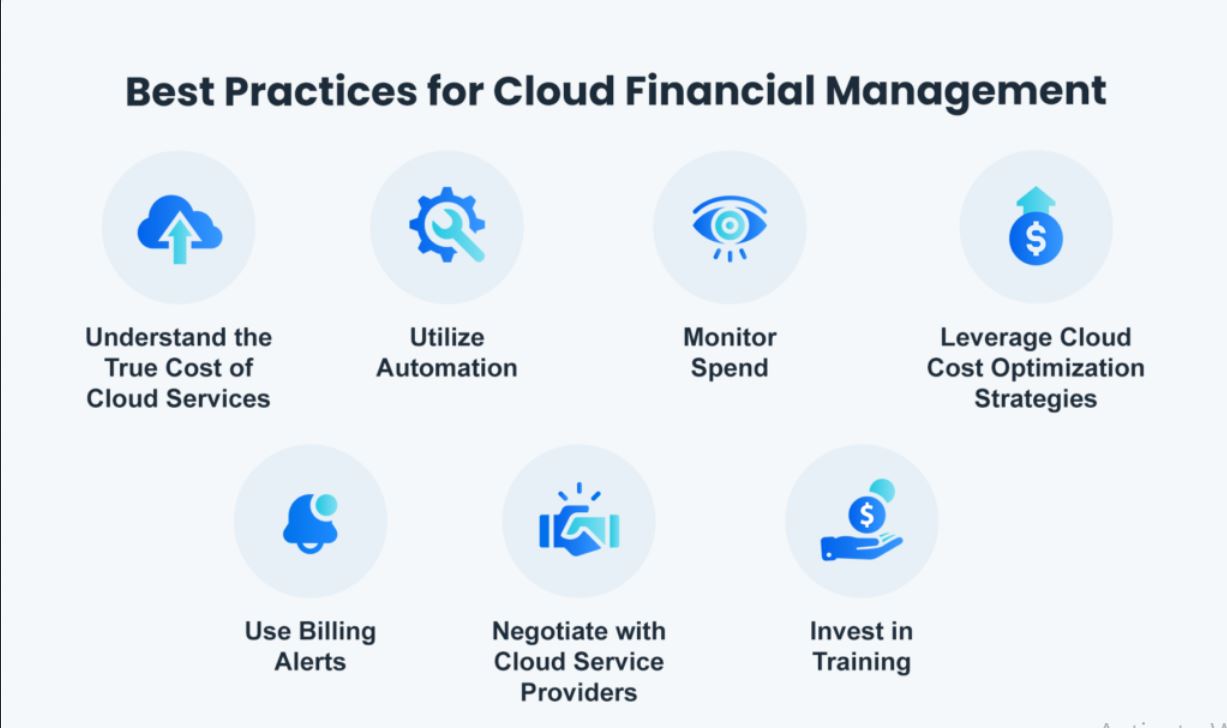In the modern digital landscape, businesses increasingly rely on cloud computing to scale their operations, improve efficiency, and stay competitive. While the cloud offers numerous benefits, it also comes with the challenge of managing cloud spend effectively.
Uncontrolled cloud spending can quickly escalate, leading to budget overruns and financial inefficiencies. To tackle this issue, organizations turn to Cloud Financial Management (CFM) strategies. In this article, we will explore how CFM can help businesses gain control of their cloud spending.
Understanding Cloud Financial Management (CFM)
Cloud Financial Management refers to the set of practices, tools, and strategies that businesses employ to optimize and control their cloud-related expenses. The goal of CFM is to ensure that organizations are getting the best value from their cloud investments while keeping costs in check. CFM encompasses various aspects, including cost visibility, budgeting, cost optimization, and cost governance.
Key Components of CFM:
- Cost Visibility: One of the first steps in gaining control over cloud spend is having clear visibility into your cloud costs. CFM tools provide detailed insights into how resources are being utilized, enabling organizations to track expenses at a granular level.
- Cost Allocation: CFM helps in attributing cloud costs to specific departments, teams, or projects. This allocation of costs allows organizations to understand which areas of their business are consuming the most resources and make informed decisions accordingly.
- Budgeting and Forecasting: CFM tools facilitate the creation of budgets and forecasts based on historical data and expected growth. This proactive approach helps in preventing cost overruns and aligning cloud spending with business goals.
- Cost Optimization: Cost optimization is a core component of CFM. It involves identifying and eliminating wasteful spending, resizing resources, choosing cost-effective instance types, and leveraging reserved instances or spot instances where applicable.
- Cost Governance and Compliance: CFM includes establishing policies and rules to govern cloud usage, ensuring compliance with industry regulations, and preventing unauthorized spending.
How CFM Helps Gain Control of Cloud Spend:
- Cost Transparency: CFM tools provide a comprehensive view of your cloud spending, breaking down costs by service, instance, user, and more. This transparency enables organizations to identify cost drivers and make data-driven decisions.
- Real-time Monitoring: With CFM, businesses can monitor their cloud spend in real-time. This helps in identifying anomalies or unexpected spikes in spending, allowing for immediate action to be taken.
- Resource Optimization: CFM tools offer insights into underutilized or idle resources. Organizations can then make informed decisions about downsizing, scaling up, or reconfiguring resources to optimize costs.
- Budget Adherence: CFM allows organizations to set budgets and track spending against those budgets. When actual spending approaches or exceeds budget thresholds, alerts are triggered, allowing for timely adjustments and cost containment.
- Data-Driven Decision Making: CFM empowers organizations to base their cloud-related decisions on data and analytics rather than guesswork. This leads to more efficient resource allocation and cost savings.
- Scalability: CFM solutions are scalable and adaptable to the evolving needs of your organization. As your cloud environment grows, CFM tools can accommodate the increased complexity and provide continuous cost management.
Conclusion
Cloud Financial Management is a critical component of effective cloud management in the modern business landscape. It empowers organizations to gain control of their cloud spend, optimize costs, and make informed decisions that align with their business goals. By providing cost visibility, allocation, budgeting, and optimization capabilities, CFM helps businesses harness the full potential of cloud computing while keeping their financial health intact. In an era where cloud adoption is essential for competitiveness, CFM is the key to achieving cloud cost control and financial efficiency.
